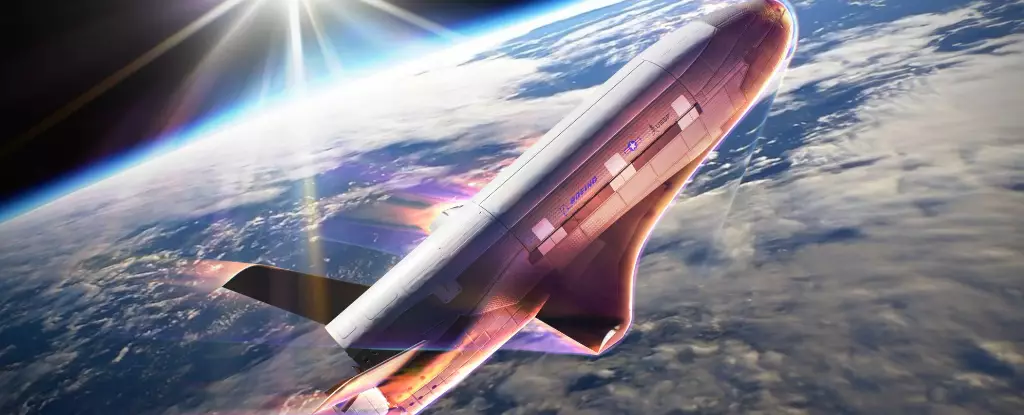The X-37B Orbital Test Vehicle (OTV) stands out as a remarkable achievement in aerospace technology and a symbol of military innovation shrouded in confidentiality. Since its inaugural launch in 2011, this cutting-edge spaceplane, developed by Boeing and operated by the United States Space Force (USSF), has ignited curiosity and speculation within the aerospace community and beyond.
The X-37B, engineered to operate in Low-Earth Orbit (LEO) between 240 to 800 kilometers above Earth, enables the USSF to conduct advanced experiments without revealing critical parameters of its operations. As it embarks on its seventh mission (OTV-7) on December 29, 2023, the vehicle continues to advance our understanding of reusable spacecraft technologies, aligning with long-term strategic goals for human presence and operations in outer space. This latest mission focuses specifically on the ramifications of space radiation on various materials, as well as testing new technologies for Space Domain Awareness (SDA).
One of the most innovative aspects of this mission is the X-37B’s planned execution of aerodynamic maneuvers, a technique that allows it to decrease altitude and speed while conservatively using fuel. The maneuver, known as “aerobraking,” involves the X-37B skimming the upper atmosphere, enabling a unique approach to orbital adjustments without revealing its movements to potential adversaries. This operational secrecy heightens the vehicle’s strategic value, particularly in a geopolitical climate defined by competition in space.
The concept of aerobraking is not original to the X-37B; rather, it’s a technique honed through decades of space exploration. Over the years, missions to Mars, such as the Mars Global Surveyor and the Mars Reconnaissance Orbiter, have successfully utilized aerobraking as an effective method for reaching and maintaining orbits around celestial bodies. The successful implementation of these techniques on the X-37B signals a significant evolution in how spacecraft can maneuver in space and offers a glimpse into the operational capabilities of future military and scientific missions.
Frank Kendall, Secretary of the Air Force, underscored the mission’s importance, highlighting that this pioneering approach not only reflects the USSF’s commitment to innovation but also enhances the nation’s capacity to conduct essential operations in space. As this kind of technology develops, it could fundamentally change the landscape of both defense strategies and scientific inquiry.
Despite the technological advancements and potential applications, the X-37B remains an enigma. While some insights can be gleaned from previous missions, much about the spacecraft’s capabilities, such as its specific experimental payloads and the full scope of its functions, remains undisclosed. During the Aspen Security Forum in 2019, former USAF Secretary Heather Wilson shed some light on the X-37B’s operational mechanics, hinting at the vehicle’s ability to execute unpredictable orbits. This characteristic serves both as a means of evasion and a significant tactical advantage, complicating adversaries’ tracking efforts.
Expert astronomers like Jonathan McDowell from the Harvard-Smithsonian Center for Astrophysics have drawn attention to how a simple alteration in trajectory can cause disruption among monitoring systems, suggesting that the X-37B’s orbital techniques represent a sophisticated clandestine operational capacity. This element of unpredictability could remain a core asset for U.S. interests in space.
As OTV-7 continues its mission, the scope of its tests broadens, focusing not only on SDA technologies but also on scientific experiments that may yield invaluable insights. Among these is the “Seeds-2” experiment, which endeavors to study the effects of space radiation on plant seeds supplied by NASA. This research could have implications for future long-term human operations in space, including potential colonization efforts or the establishment of sustainable agricultural practices beyond Earth.
Moreover, the X-37B is expected to play a role in developing standards for mitigating space debris, a growing concern as more satellites and spacecraft populate Earth’s orbit. By ejecting non-essential service module components as part of its mission, the X-37B not only demonstrates responsible space operations but also contributes to the broader efforts to address orbital congestion.
The X-37B Orbital Test Vehicle embodies a fusion of military strategy, scientific exploration, and cutting-edge technological development. As it continues its operations in space, it offers myriad potential avenues for research and enhanced strategic capabilities, making it a pivotal player in the ever-evolving saga of space exploration. The intrigue surrounding the X-37B persists, underscoring the necessity of innovation in a domain that is becoming increasingly contested and critical to national security.


Leave a Reply